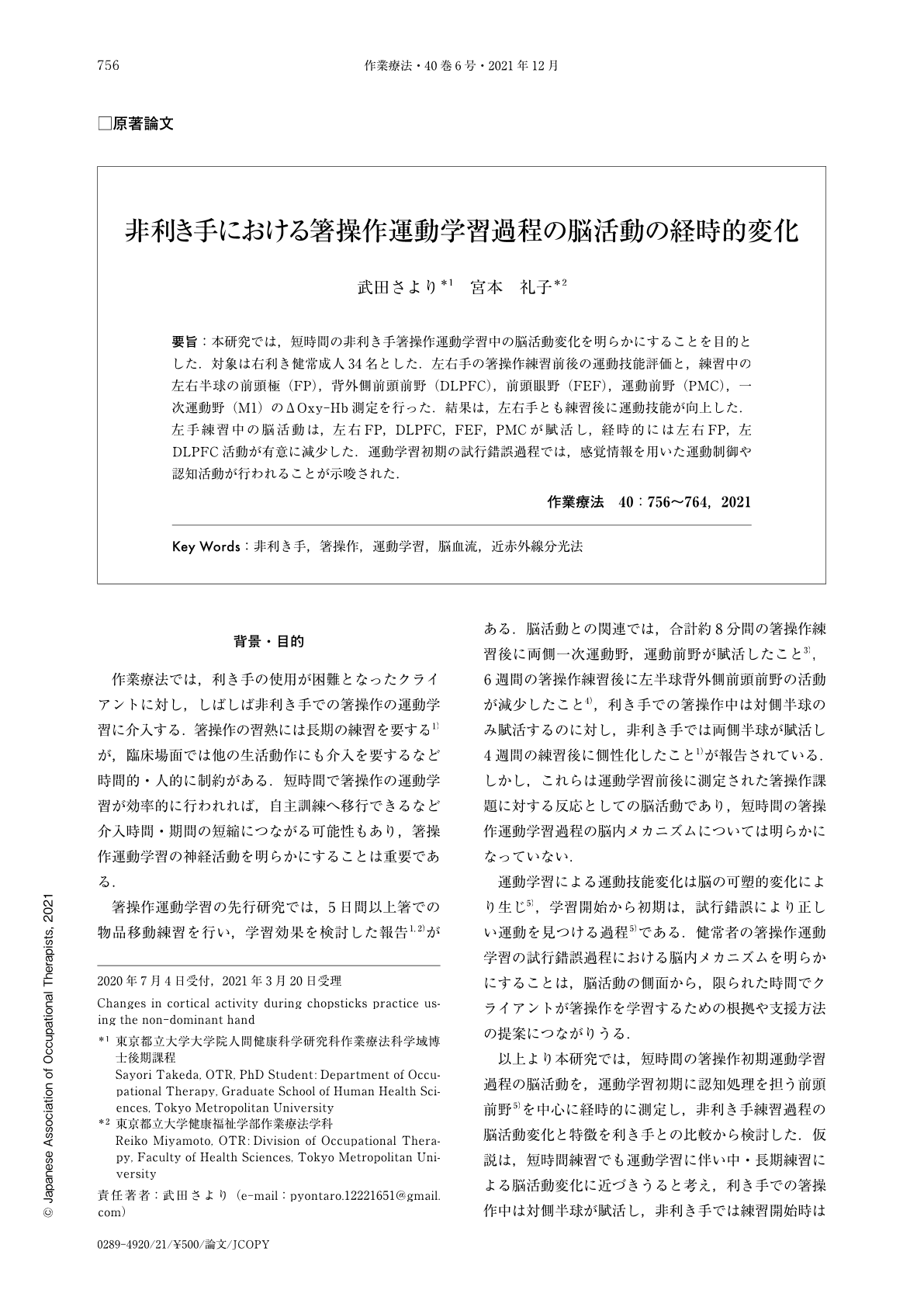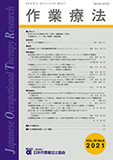Japanese
English
- 販売していません
- Abstract 文献概要
- 1ページ目 Look Inside
- 参考文献 Reference
要旨:本研究では,短時間の非利き手箸操作運動学習中の脳活動変化を明らかにすることを目的とした.対象は右利き健常成人34名とした.左右手の箸操作練習前後の運動技能評価と,練習中の左右半球の前頭極(FP),背外側前頭前野(DLPFC),前頭眼野(FEF),運動前野(PMC),一次運動野(M1)のΔOxy-Hb測定を行った.結果は,左右手とも練習後に運動技能が向上した.左手練習中の脳活動は,左右FP,DLPFC,FEF,PMCが賦活し,経時的には左右FP,左DLPFC活動が有意に減少した.運動学習初期の試行錯誤過程では,感覚情報を用いた運動制御や認知活動が行われることが示唆された.
【aims】We analyzed changes in brain activity during a short period of non-dominant chopstick use learning. 【Methods】The 49 channels fNIRS measurement were assessed, and we analyzed the relative value of oxyhemoglobin in FP, DLPFC, FEF, PMC, and M1 in both hemispheres during practice. We also evaluated the motor skills before and after practice. 【Results】The motor skills of left and right hands improved after practice. Brain activity during left-hand practice showed activation of FP, DLPFC, FEF, and PMC in the left and right hemispheres, and a significant decrease in activity in FP in the left and right hemispheres, and DLPFC in the left hemisphere. 【Discussion】The results suggest that motor control using sensory information and cognitive activity were performed in the trial and error stage in the early stage of motor learning.

Copyright © 2021, Japanese Association of Occupational Therapists. All rights reserved.


